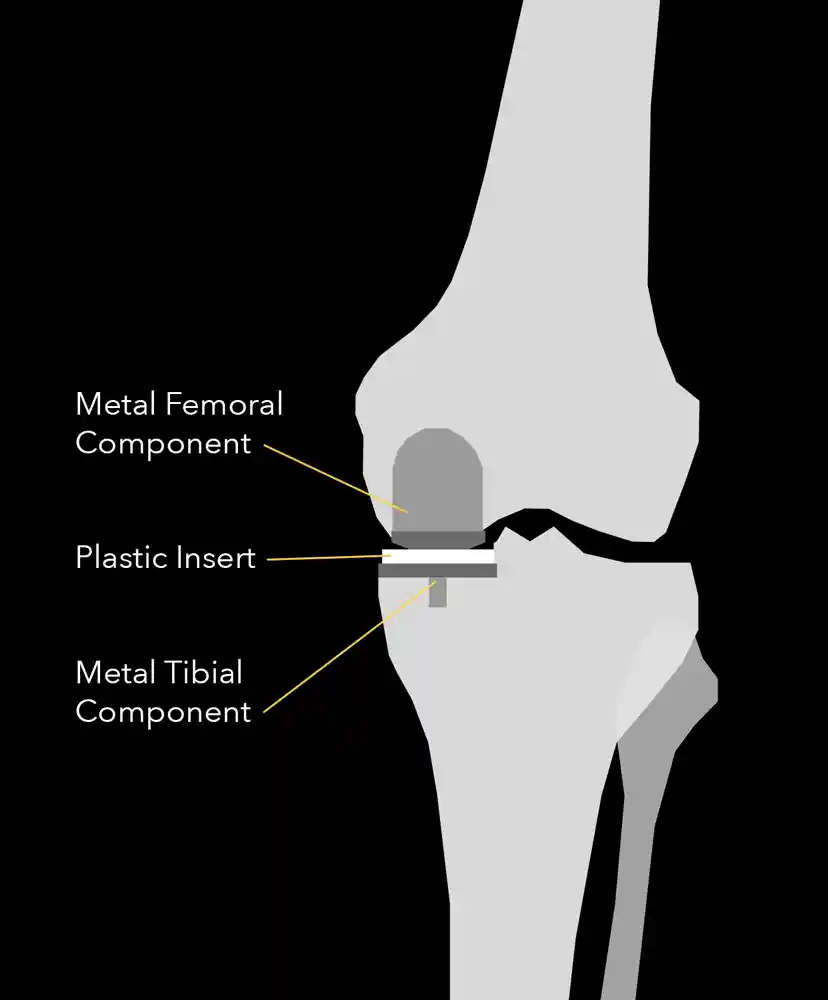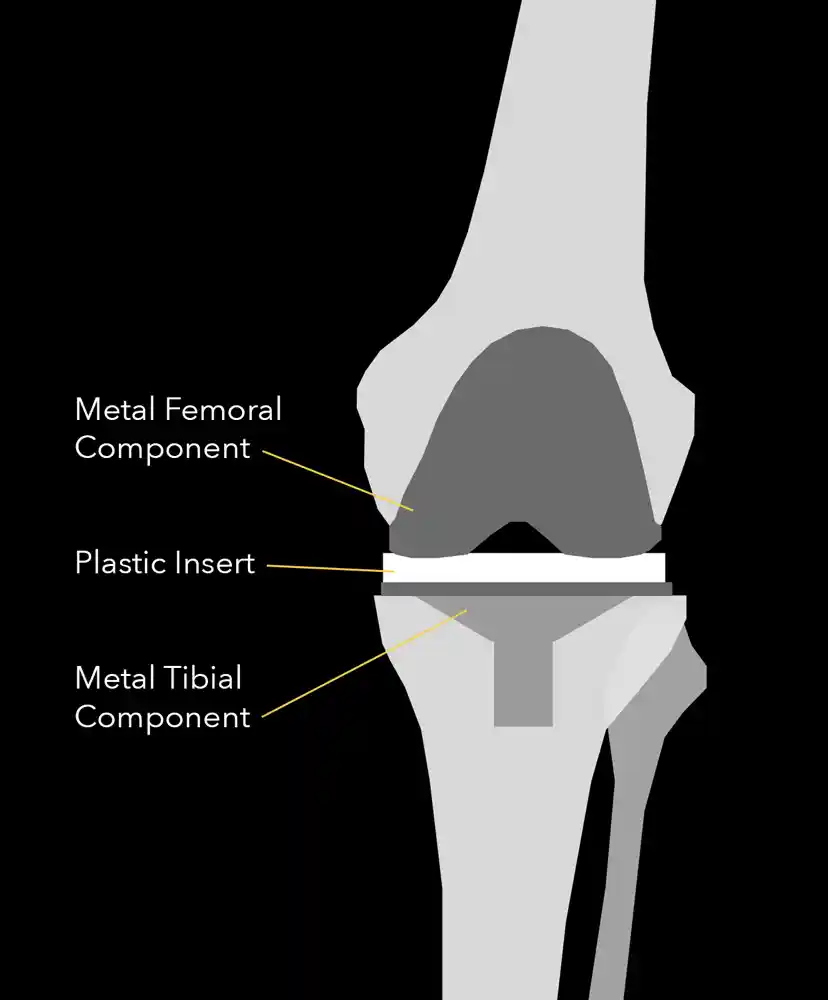
Partial Knee Replacement
The anatomy of the knee joint is divided into three main compartments:
- Medial: inside of the knee
- Lateral: outside of the knee
- Patellofemoral: front of the knee, behind the kneecap
If advanced arthritis is limited to a particular compartment, a partial knee replacement may be a good treatment option. During this procedure, only a portion of the knee joint is resurfaced. Similarly to a total knee replacement, the deteriorated cartilage at the ends of the bones are removed, and replaced with metal components that reconstruct the knee joint surfaces. These metal components are typically cemented into the bone. Only the compartment with advanced arthritis is resurfaced with the metal implants, and the healthy cartilage and bone of the other compartments are preserved.

Total Knee Replacement
With this procedure, the damaged bone and cartilage of the knee is removed, and replaced with metal and plastic implants. These metal components reconstruct the knee joint surfaces, and are either cemented or press-fit into the bone depending on bone quality & strength. A dense plastic component is placed in-between the new metal resurfacings, which creates a smooth articulation of the knee joint. Bone spurs along the edge of patella (kneecap) are also trimmed, and the patella is kept intact if possible. When necessary, the kneecap is also resurfaced.
Knee Pain Knee Arthritis Robot Assisted Knee Replacement